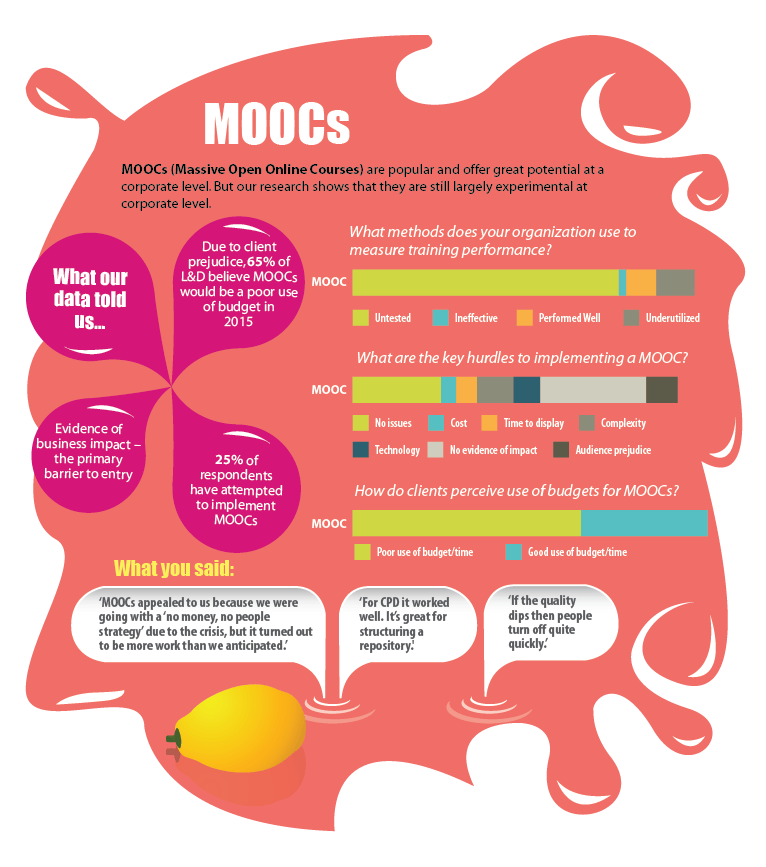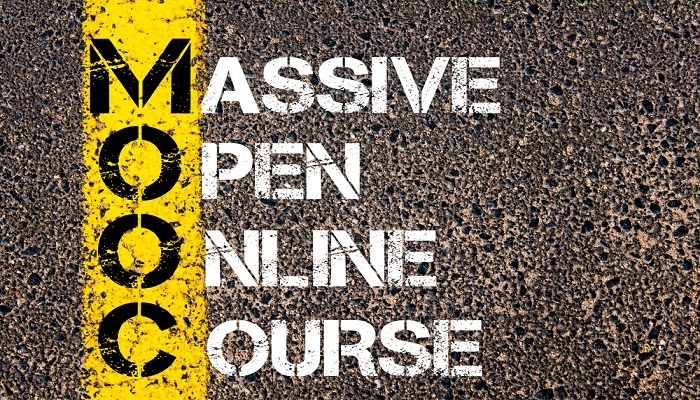MOOCs, for those who may not be familiar with the concept, are Massive Open Online Courses. Online access to learners is unlimited and the principle purpose of this type of education is to facilitate open communication between those who are teaching and those are learning.
The potential of MOOCs (Massive Open Online Courses) for learning at a corporate level is significant. But developing the right model for implementation and management of these courses is still a work in progress. There are also issues of scope definition and resource ownership, which means that long-term curation and management of MOOCs can be somewhat contentious. Research suggests also that if the quality of a MOOC dips for any reason, then participants can be turned off very quickly, perhaps even more so than other learning methods.
That said, there is unquestionably a role for well-managed, well implemented and well-resourced MOOCs in corporate training. If you’re considering MOOCs to improve the quality of learning and development in your firm or using it as part of a wider blend of learning, there are a number of considerations:
Who owns it?
Some L&D professionals tend to believe that a MOOC is all too often ‘dumped on their plate’ rather than remaining the responsibility of the relevant business function. In order to work effectively, a MOOC needs continuous management, so don’t believe that simply setting it up is the answer to all your problems.
Creation to Curation
There is a potential danger that MOOC business cases can be based on the false economy of freeing up resources from course development – resources which were required to curate content being supplied to the MOOC system. This is flawed thinking as creation and curation of content each have their own vital roles to play.
Quality and Quantity
Undoubtedly the quality of MOOCs varies. This can have a very early impact on participants, as they tend to walk away from content that they don’t believe is of sufficient quality. This can be exacerbated by the sometimes-overwhelming quantity of MOOC content, which tends to turn off participants for a completely different reason – the fear that they will simply never ‘get through’ all the material that’s been included. To strike a happy medium between quality and quantity, providing a guiding ‘golden-path’ curriculum can be very helpful.
Beware of Grazing
Participants in MOOCs can sometimes be tempted to go ‘grazing’, i.e. enrolling in courses on a whim, in areas that don’t benefit their function. There’s a strong case to me made for implementing greater controls in this area, ensuring that learners don’t get sidetracked by some bright or shiny content that doesn’t really relate to them at all.
Remember the Gym Membership Model
We’re all familiar with the long queue of people joining their local gyms in January, but slowly disappearing thereafter as their enthusiasm and their commitment rapidly wanes. It can be a little like that with a MOOC in corporate training. People join them with the very best of intentions, but if they’re not rewarded and stimulated at the early stage, you can expect to see a major drop-off pretty quickly.
In 2014, Interactive Services carried out qualitative research which focused on the topic of blended learning. Our research produced some interesting data from senior learning professionals in different industries about MOOCs, mobile, gamification and other resources that are being used for corporate training. See the infographic below which highlights some of our key findings about MOOCs.

Want to be part of our 2015 research project?
Interactive Services is running a new research project in 2015. Our aim is to determine how the impact of training can be effectively measured in global organizations and to develop a simple system to help organizations standardize the process.
Complete our short questionnaire or contact us to find our more.
